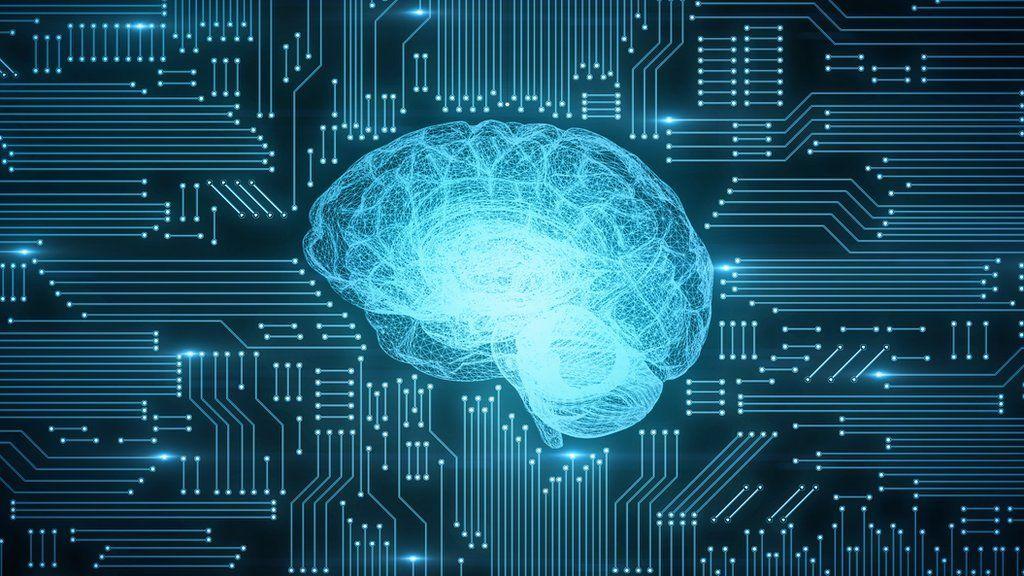In an era where the digital footprint of humanity expands exponentially, the quest for harnessing this vast ocean of data for societal good has never been more urgent. Among the myriad challenges that confront us, crime remains a persistent shadow, eluding our grasp with its ever-evolving nature. Enter the arena of Large Language Models (LLMs), the titans of artificial intelligence, with their unparalleled ability to digest and interpret the written word at a scale and speed beyond human capability. The principle of “Garbage in, garbage out” has long governed the realm of data analysis, dictating that the quality of output is inextricably linked to the quality of input. However, in the groundbreaking exploration of zero-shot detection of crime using LLMs, we stand on the cusp of a paradigm shift. This article delves into the heart of this innovative approach, where the traditional barriers of data quality and specificity are challenged by the sheer cognitive might of these digital behemoths. As we embark on this journey, we invite you to join us in unraveling the complexities of leveraging the power of LLMs to cast a revealing light on the shadows of crime, potentially transforming the landscape of law enforcement and public safety.
Unveiling the Shadows: The Power of Large Language Models in Crime Detection
In the labyrinth of digital footprints, large language models (LLMs) have emerged as torchbearers, illuminating the dark alleys where crime often lurks unseen. These AI behemoths, trained on vast expanses of text data, possess the uncanny ability to sift through the noise, identifying patterns and anomalies that hint at illicit activities. The concept of zero-shot detection, where the model makes predictions on tasks it hasn’t explicitly been trained for, opens a new chapter in crime detection. This approach relies on the model’s general understanding and inference capabilities, allowing it to apply its learned knowledge to entirely new contexts without prior exposure. The implications are profound, offering law enforcement agencies a powerful tool that can adapt to the ever-evolving landscape of criminal behavior without the need for constant retraining.
The application of LLMs in crime detection is not without its challenges, however. The adage “garbage in, garbage out” looms large over the process, underscoring the importance of the quality and integrity of the data these models are fed. Biases in the training data can lead to skewed perceptions and unjust outcomes, inadvertently amplifying existing prejudices within the system. To mitigate these risks, a multi-faceted approach is essential, combining the raw computational power of LLMs with the nuanced understanding of human oversight. Below is a simplified representation of how LLMs can be integrated into crime detection workflows:
| Step | Process | Outcome |
|---|---|---|
| 1 | Data Collection | Gather digital communications and public records |
| 2 | Preprocessing | Filter noise, anonymize personal information |
| 3 | Analysis with LLM | Identify patterns, anomalies, and potential threats |
| 4 | Human Review | Assess LLM findings, apply contextual understanding |
| 5 | Actionable Intelligence | Inform law enforcement strategies and interventions |
By weaving together the strengths of both artificial intelligence and human insight, we stand on the brink of a new era in crime detection. The journey from data to actionable intelligence encapsulates the promise and potential of LLMs to not only uncover the shadows but to cast light into the darkest corners of our digital world.
From Data to Justice: Navigating the Challenges of Zero-Shot Learning
In the realm of artificial intelligence, the leap from raw data to actionable insights often feels like a sprint across a minefield, especially when it comes to the nuanced and critical task of crime detection. Zero-shot learning, a technique where a model makes predictions on data it has never seen during training, holds a tantalizing promise: the ability to identify criminal activity without the need for extensive, crime-specific datasets. However, the adage “garbage in, garbage out” looms large over this endeavor. The quality of input data becomes paramount, as does the model’s ability to discern patterns within that data. Large Language Models (LLMs) are at the forefront of this challenge, navigating the murky waters of unstructured data to find islands of actionable intelligence.
The journey from data to justice is fraught with obstacles, not least of which is the inherent bias present in historical crime data. This bias can skew LLM predictions, inadvertently reinforcing societal prejudices. To mitigate this, developers are experimenting with novel approaches to data curation and model training. Strategies include:
- **Diversifying input data sources** to ensure a broad representation of demographics and scenarios.
- **Implementing fairness algorithms** that identify and correct for biases within the training data.
- **Using synthetic data** to fill gaps in real-world datasets, thereby providing models with a more comprehensive view of potential crime scenarios.
Moreover, the interpretability of LLM outputs remains a significant hurdle. Ensuring that the predictions made by these models are understandable and actionable by human law enforcement officers is crucial. This involves not just technological innovation but also a concerted effort to bridge the gap between AI researchers and practitioners in the field of criminal justice.
| Challenge | Strategy |
|---|---|
| Bias in Data | Implementing fairness algorithms |
| Data Scarcity | Using synthetic data |
| Interpretability of Outputs | Enhancing model transparency |
As we navigate these challenges, the potential of zero-shot learning in crime detection continues to grow. The key lies in our ability to refine these models, ensuring they are not only powerful but also just and equitable. In doing so, we move closer to a future where AI can serve as a valuable ally in the quest for justice.
Beyond the Code: Ethical Considerations and Future Pathways
In the realm of utilizing Large Language Models (LLMs) for zero-shot detection of criminal activities, the conversation extends far beyond the technical prowess these models exhibit. The ethical landscape we navigate in deploying such advanced AI tools is both complex and fraught with potential pitfalls. At the heart of this ethical quandary is the principle of fairness and the avoidance of bias, which, if not meticulously managed, can lead to the perpetuation of existing societal inequalities. For instance, data used to train these models can often be skewed, reflecting historical biases. This necessitates a proactive approach in the development and deployment phases to ensure that the AI’s “judgment” does not unfairly target or marginalize specific groups.
Moreover, the future pathways for the application of LLMs in crime detection hinge on the establishment of robust ethical guidelines and transparent operational frameworks. The potential for these models to revolutionize how law enforcement and security agencies predict and prevent crime is immense. However, this potential comes with the responsibility to safeguard individual privacy rights and ensure due process. The table below outlines a proposed ethical framework for deploying LLMs in crime detection:
| Aspect | Guideline |
|---|---|
| Data Collection | Ensure data diversity and representativeness to mitigate bias. |
| Transparency | Maintain open channels for auditing and scrutiny by independent bodies. |
| Accountability | Establish clear lines of responsibility for decisions made by the AI. |
| Privacy | Implement stringent data protection measures to safeguard personal information. |
| Due Process | Guarantee mechanisms for appeal and redress for those affected by the AI’s decisions. |
In essence, as we chart the course for integrating LLMs into societal frameworks, the emphasis must be on creating a balanced ecosystem that respects ethical boundaries while harnessing the power of AI for the greater good. The journey is as much about pioneering technological advancements as it is about reinforcing our commitment to ethical integrity and social responsibility.
Harnessing AI for a Safer Tomorrow: Practical Recommendations for Implementation
In the quest to leverage Artificial Intelligence (AI) for enhancing public safety, the implementation of Large Language Models (LLMs) for zero-shot detection of criminal activities presents a novel frontier. This approach does not merely rely on historical data but also interprets the nuances of human language to predict and prevent potential crimes. The key to success lies in the quality of data fed into these models. As the adage goes, “garbage in, garbage out,” ensuring high-quality, unbiased data is paramount. To this end, practical recommendations include:
- Curating Diverse Data Sets: It’s crucial to gather data from a wide array of sources to minimize biases. This diversity helps in training models that are not only more accurate but also fair and equitable.
- Continuous Model Training: AI models thrive on data. Regularly updating the models with new information helps in keeping the predictions relevant and timely. This is particularly important in the fast-evolving landscape of criminal behavior.
Furthermore, the implementation process must be underpinned by ethical considerations and privacy protections. The table below outlines a simplified framework for ethical AI implementation in crime detection:
| Step | Action | Consideration |
|---|---|---|
| 1 | Define Objectives | Ensure the goals align with ethical standards and public safety objectives. |
| 2 | Data Collection | Collect data responsibly, respecting privacy and avoiding bias. |
| 3 | Model Training | Train models with a focus on fairness, accountability, and transparency. |
| 4 | Deployment | Implement with continuous monitoring for unintended consequences. |
| 5 | Feedback Loop | Establish mechanisms for feedback to refine and improve the model over time. |
By adhering to these recommendations and ensuring the ethical use of AI, we can harness the power of Large Language Models to create a safer tomorrow. The journey towards implementing these technologies is complex and requires a multifaceted approach, blending technical prowess with ethical considerations. As we navigate this path, the potential to revolutionize crime detection and prevention is immense, promising a future where public safety is significantly enhanced through the intelligent application of AI.
The Way Forward
As we draw the curtains on our exploration of the innovative yet challenging frontier of employing Large Language Models (LLMs) for zero-shot detection of crime, it’s clear that we stand at the cusp of a technological revolution that could redefine the paradigms of law enforcement and public safety. The journey through the intricate web of “Garbage in, garbage out” has unraveled the complexities and the critical importance of the quality of data feeding these advanced AI systems. Like alchemists turning lead into gold, the potential to transform raw, unstructured data into predictive insights that could safeguard communities is a testament to human ingenuity and technological advancement.
Yet, as we venture further into this brave new world, the path is fraught with ethical quandaries and technical hurdles. The balance between innovation and privacy, the accuracy of predictions versus the risk of bias, and the imperative of responsible AI use are but a few of the challenges that lie ahead. As we stand on the threshold of this new era, it’s crucial to remember that the tools we create are a reflection of our values and aspirations. The quest to harness the power of LLMs for crime detection is not just a technical endeavor but a moral one, urging us to look beyond the data and algorithms to the societal impact of our creations.
In the end, the story of using Large Language Models for zero-shot detection of crime is still being written. It’s a narrative filled with potential and pitfalls, a reminder that in our pursuit of progress, we must tread thoughtfully, ensuring that our technological advances serve to uplift and protect, rather than divide and endanger. As we continue to navigate this uncharted territory, let us do so with a keen awareness of the responsibility that accompanies the power of innovation, striving always to ensure that the future we build is one where technology is a force for good, a beacon of hope and safety in an uncertain world.